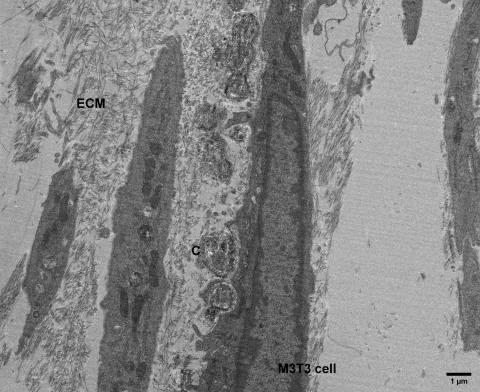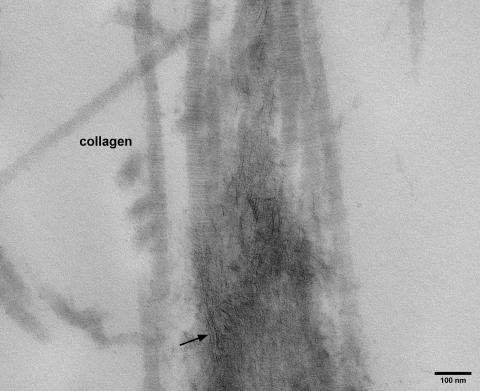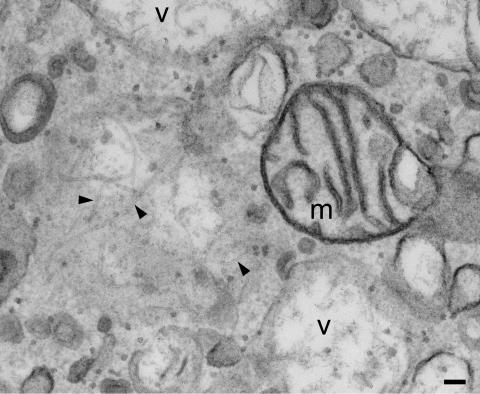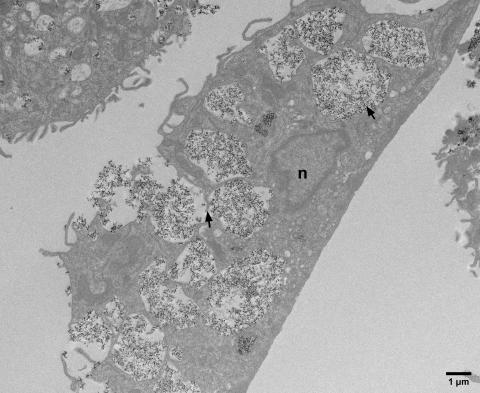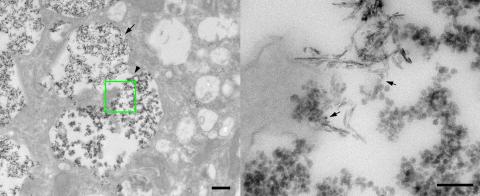Bright-field TEM of thin sections
Most biological samples require extensive processing prior to TEM as they have a high water content and little inherent contrast due to being composed predominantly of elements with a low atomic number, meaning they are not electron-dense.
The general processing steps are: a) fixation - to preserve the specimen in as ‘life-like’ a state as possible; b) staining with heavy metals, such as osmium tetroxide, uranyl acetate and lead citrate - to introduce contrast; and c) dehydration and resin embedding - in preparation for thin sectioning.
Due to the large range of organisms and types of tissue, there is no universal ‘one-size-fits-all’ method of specimen processing. Especially if samples contain inorganic inclusions to be preserved for imaging and/or analysis by EDX or EELS (e.g. nanoparticles), or if the samples are intended for use in immuno-TEM, the processing protocol usually needs adapting in order to preserve the chemistry of inclusions or the antigenicity of target antigens. Please discuss your projects with us prior to sample drop-off.
Rakesh Rajan, Prof. Melinda Duer Group, Department of Chemistry, University of Cambridge – Pathways of ECM calcification
Culture of M3T3 cells induced in-vitro to produce extracellular matrix (ECM) and matrix calcifications (C). Low-magnification overview image; the knife mark striations are caused by the inherent calcium phosphate crystals (doi.org/10.1016/j.celrep.2019.05.038).
Higher magnification reveals the banding of individual collagen fibres and the electron-dense crystals of calcium phosphate platelets (arrow) marking the start of matrix calcification.
Prof. Slawomir Boncel, Silesian University of Technology, Poland – Exploring MWCNTs as vehicles for drug targeting
Uptake of multi-walled carbon nanotubes by human macrophages in culture; arrowheads indicate MWCNTs, m = mitochondria, v = intracellular vesicles; scale bar is 100 nm (doi: 10.1021/acsbiomaterials.6b00197).
Karin Müller, Department of PDN and Chemistry (Duer Group), University of Cambridge – Uptake of hydroxyapatite nanoparticles in human macrophages (then dx.doi.org/10.1016/j.biomaterials.2013.10.041)
Low magnification overview of macrophage taking up vast amounts of HA nanoparticles. The particles are sequestered in large, interconnected vacuoles (arrows) that form a surface-connected compartment; n = nucleus.
HA nanoparticles are subject to degradation inside these vesicles changing from a thin platelet-like appearance to a smooth, round morphology; scale bars are 100 nm.

